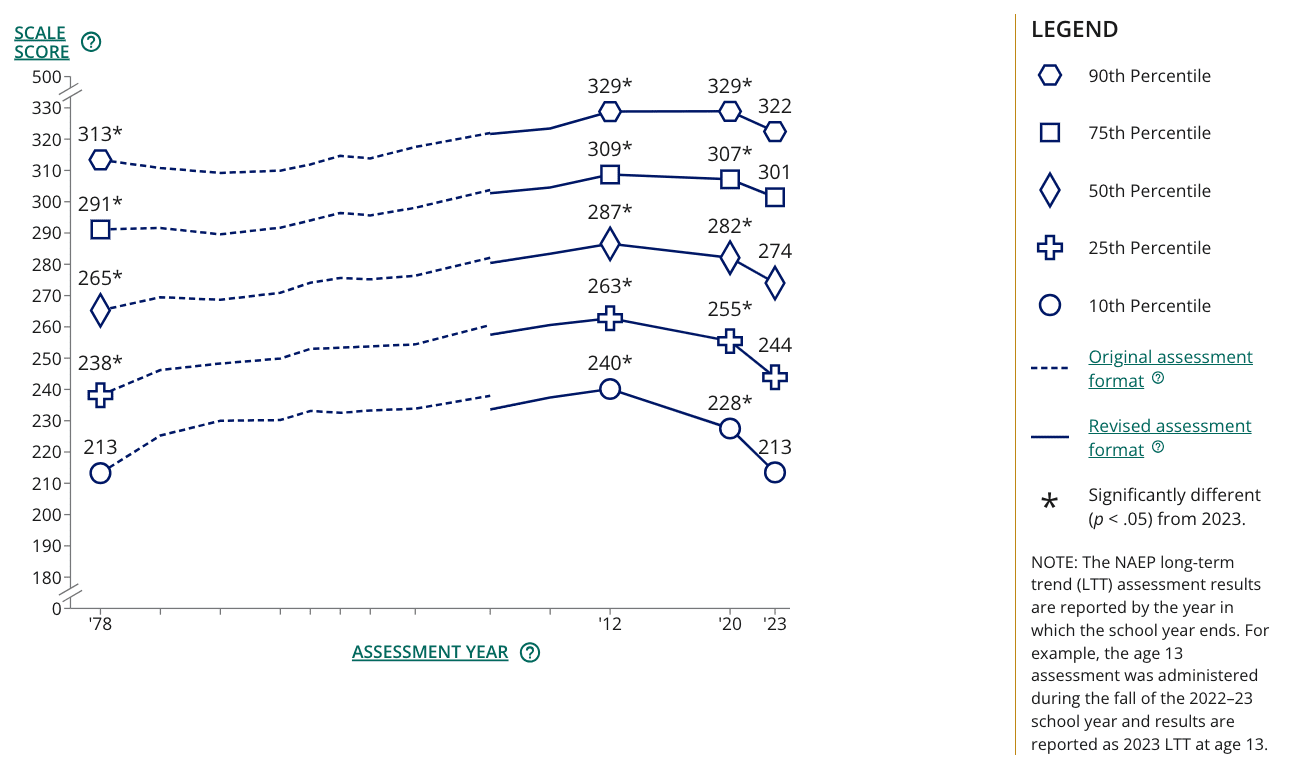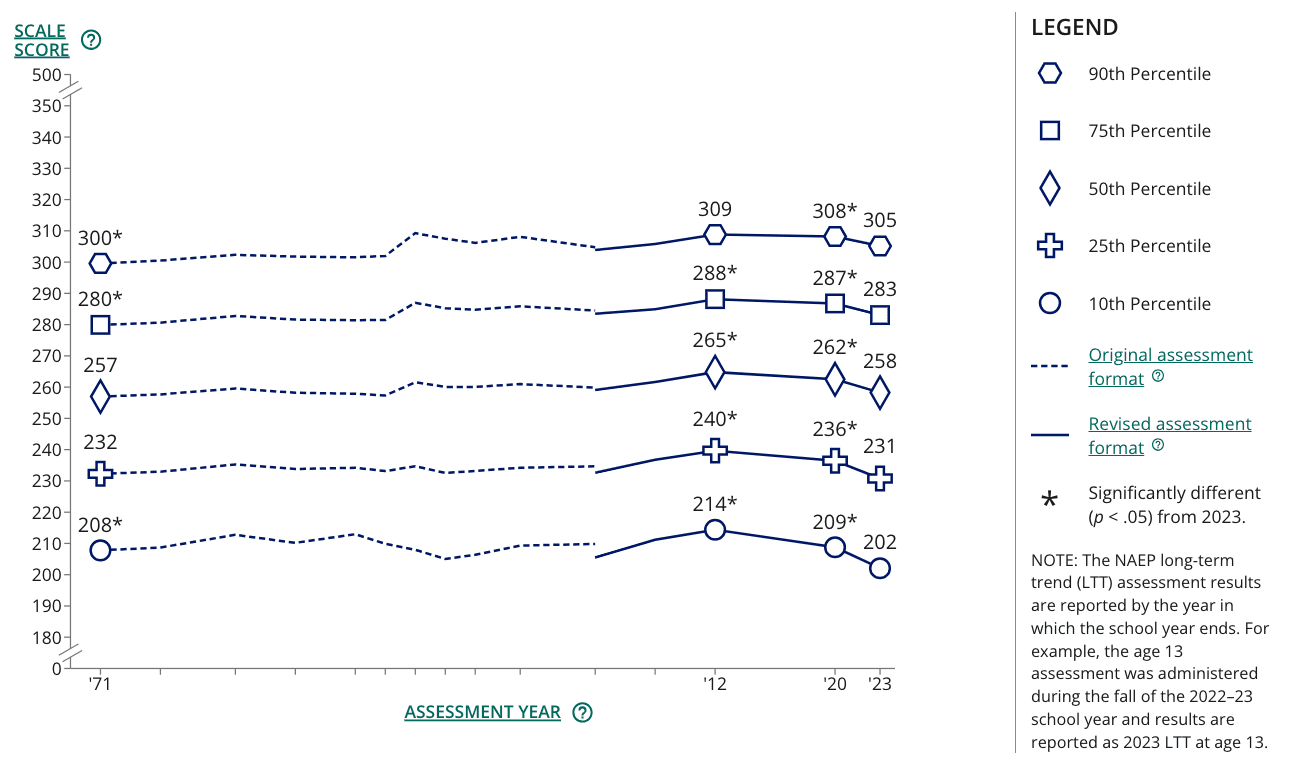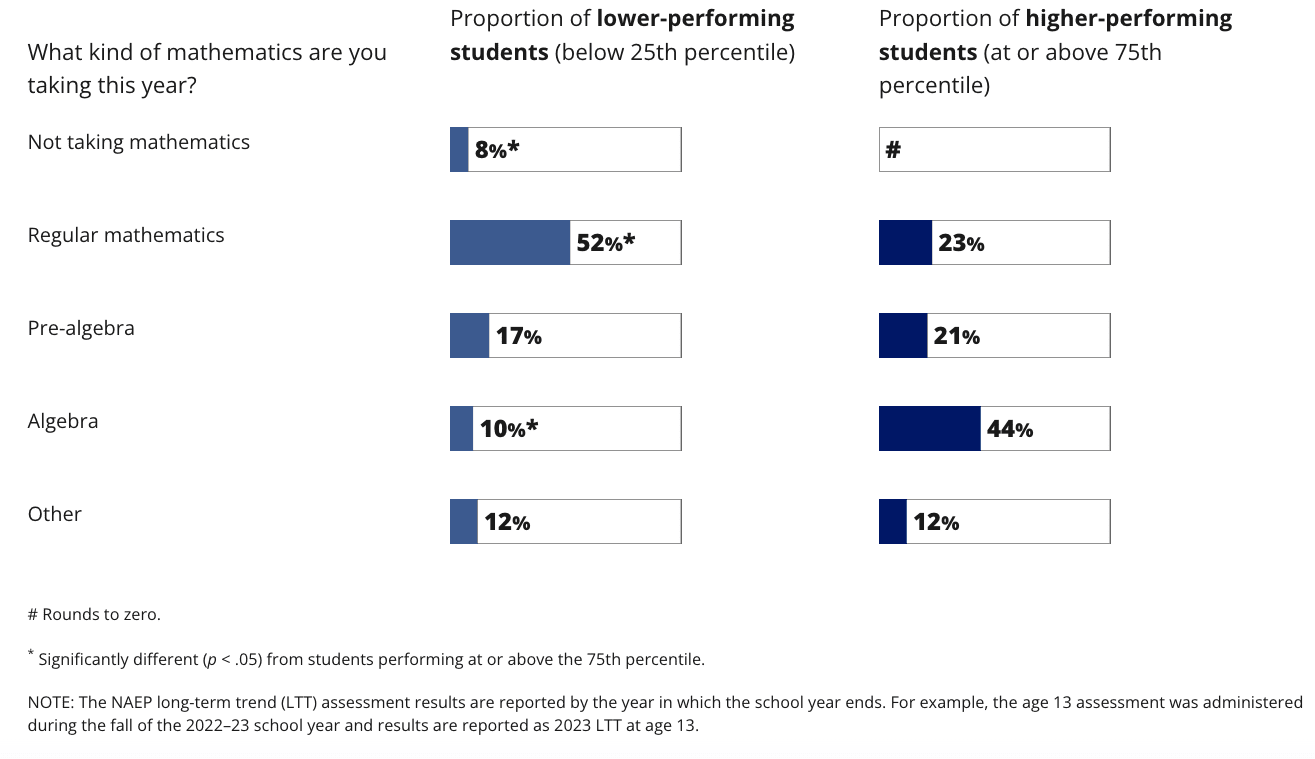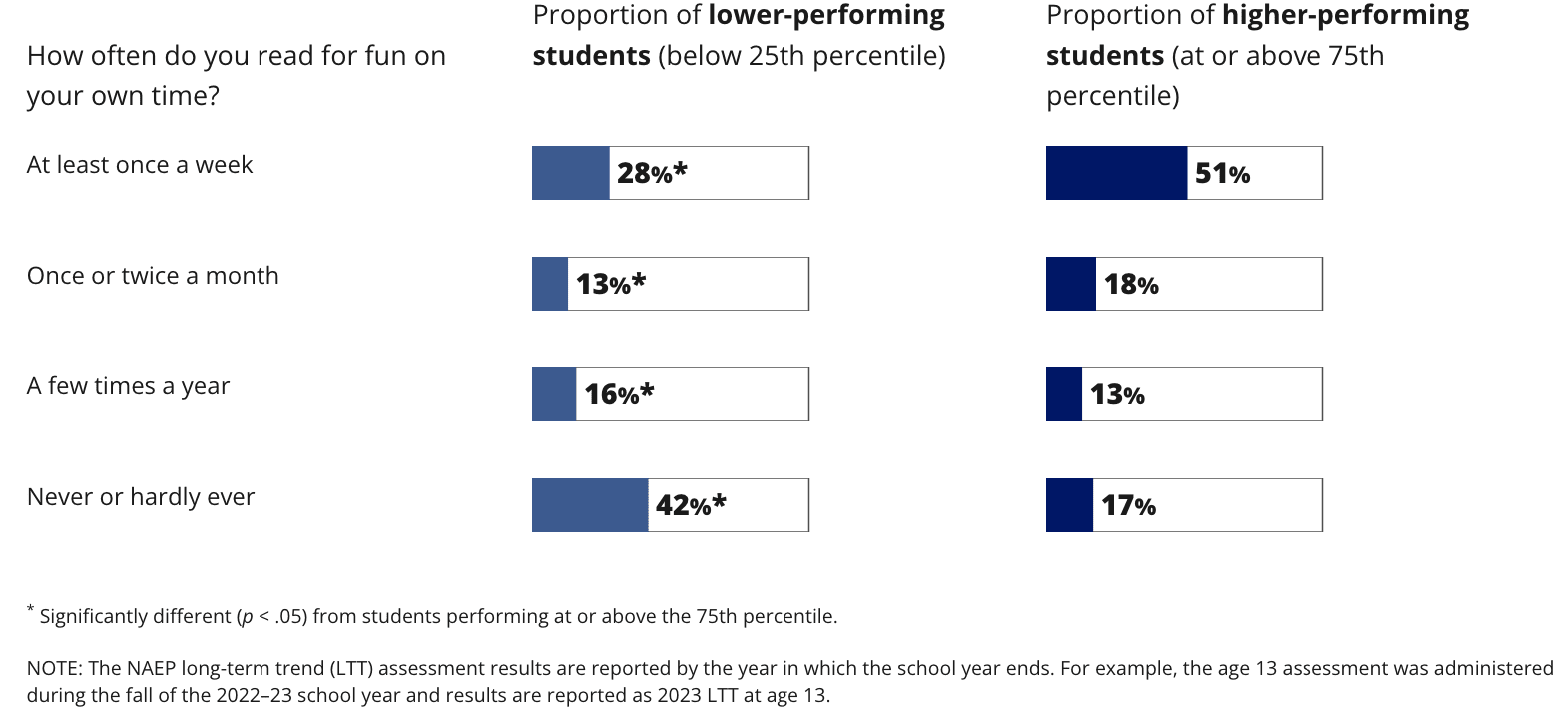Reading, math scores continue post-pandemic drop
Continuing a decade-long trend, reading and math scores for 13-year-olds dropped again this year, according to the Long-Term Trend Assessment data released this week by the National Center for Education Statistics (NCES).
Today’s release is significant because it represents the first snapshot of the academic performance of 13-year-olds nationally since the start of the pandemic. The data provides further evidence of the massive impact of COVID-19 on student academic achievement.
The high level takeaways that are not surprising:
- Scores for 13-year-olds in both math and reading have declined since the pandemic, dropping to the lowest point in decades for both math and reading.
- The average scores for 13-year-olds declined four points in reading and nine points in mathematics, compared to pre-pandemic scores.
- Compared to a decade ago, the average scores declined seven points in reading and 14 points in mathematics.
In both math and reading, scores dropped for all students, but the lower performing students experienced greater declines.
While reading and math scores for 13-year-olds have trended downward since the 2011-2012 school year, this most recent assessment, the first since the fall of 2019, suggests the rate of decline has accelerated post-pandemic.
What’s the bigger takeaway? More than three years after COVID disrupted learning for students across the country, we must remain vigilant in working to reverse COVID learning loss. Schools and states must leverage the resources and tools available to them to provide high impact tutoring and remediation for students, follow data-driven best practices for educating and accelerating students, and continue to hold teachers and students to high expectations.
Subject Specific Takeaways
MATHEMATICS
Math scores declined across all student groups, regardless of academic performance. The decline, though, was more acute among the lowest performing students — 12 to 14 points — than among the higher performing students, for whom scores dropped by six to eight points.
These declines are not a new development. Math scores have been dropping over the past decade. The cause for alarm, though, is in the accelerating rate of decline since the pandemic.

Graphic: NCES
While students of all identities experienced decreases in scores, there were certain groups that experienced greater decreases in performance, sparking concern.
When disaggregated by race, students identifying as Black, belonging to two or more races, and white saw statistically significant decreases in reading scores. Hispanic and AAPI scores also dropped, but those declines were not statistically significant, according to NCES.
Female student scores decreased by 11 points, compared to a seven-point decrease for male students. The gap between math scores for males and females widened from a three-point gap in 2020 — 281 for males vs. 278 for females — to a seven-point current gap — 274 for males vs. 267 for females.
Black students’ math scores dropped by 13 points from 2020, as compared to a six-point drop among white students. The score gap between Black and white students, meanwhile, increased from 35 points in 2020 to 42 points in 2023.
In the survey section of the LTT test, students who responded that they read for fun daily and were taking Algebra 1 in 8th grade performed better on the reading and math exams, respectively.
READING
The drop in average reading scores regressed back to a level of achievement not seen since the first reading assessment, administered in 1971 — more than 50 years ago.
The students in the bottom quarter of performers did even worse, performing worse than their counterparts in 1971.
The bottom line? Our low performers are getting left behind at alarming rates compared to their peers.

Graphic: NCES
Worth highlighting is that 13-year-olds in the eighth grade performed worse than the 13-year-olds in the seventh grade. In fact, NCES Commissioner Peggy Carr shared that the seventh graders didn’t experience much loss at all. Additional research will be needed to parse this interesting quirk.
SURVEY
Students were also surveyed about their learning experience. The results revealed several insights. High performing students, for instance, tended to take advanced math courses and to read for fun.
Students were asked, “What kind of mathematics are you taking this year?”
Students enrolled in more advanced math courses, such as algebra, performed at a significantly higher level academically. The survey found that 44 % of the highest-performing students reported that they were taking algebra during the 2022–23 school year. Just 10 % of the lowest-performing students reported taking algebra.

Graphic: NCES
This raises some alarms due to the decrease in the number of students taking advanced math in middle school. NAEP data shows that the percentage of students enrolled in Algebra 1 at age 13 has dropped by 10 percentage points nationally over the last decade.

Graphic: NCES
For reading, a key driver for success was whether or not students read for fun. Over half of the highest-performing students reported that they read for fun at least once a week. This contrasted with 42% of the lowest-performing students reporting never reading for fun.
Graphic: NCES
So now what?
Reversing these downward trends in achievement will take targeted investments in remediation, acceleration, and education best practices to ensure that students are academically prepared for the next grade or life after high school. Thankfully, Texas has already taken steps towards this goal.
This legislative session, the Texas Legislature passed legislation that would:
- increase enrollment in advanced math pathways in middle school
- double down on research-backed, high-impact tutoring
- ensure that every teacher has access to high quality instructional materials and lesson plans
These investments will play a key role in increasing proficiency and readiness for Texas students and ensure that they not only recover from COVID learning loss, but go on to reach new heights in academic achievement.
Read more:
- Education & workforce: New legislation to know about
- Texas 2036’s biggest education issues this legislative session
- Investing more in teachers and educator workforce
Love this blog? Support our work.

